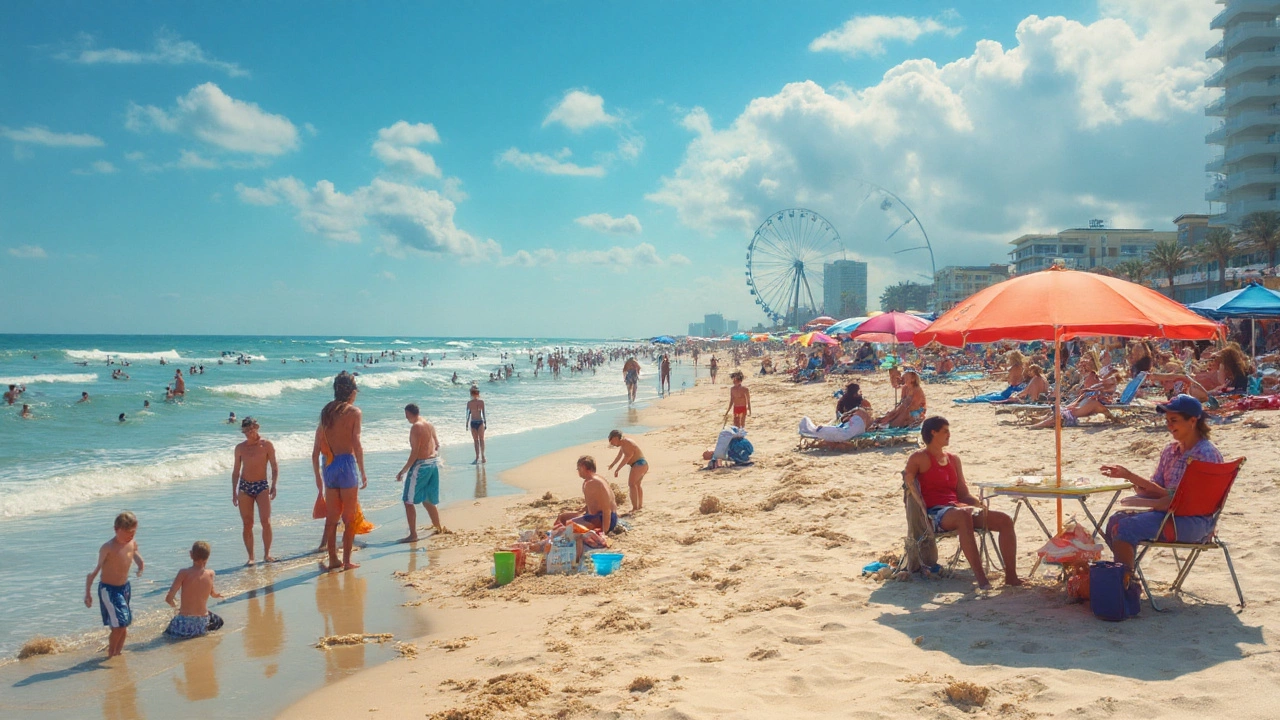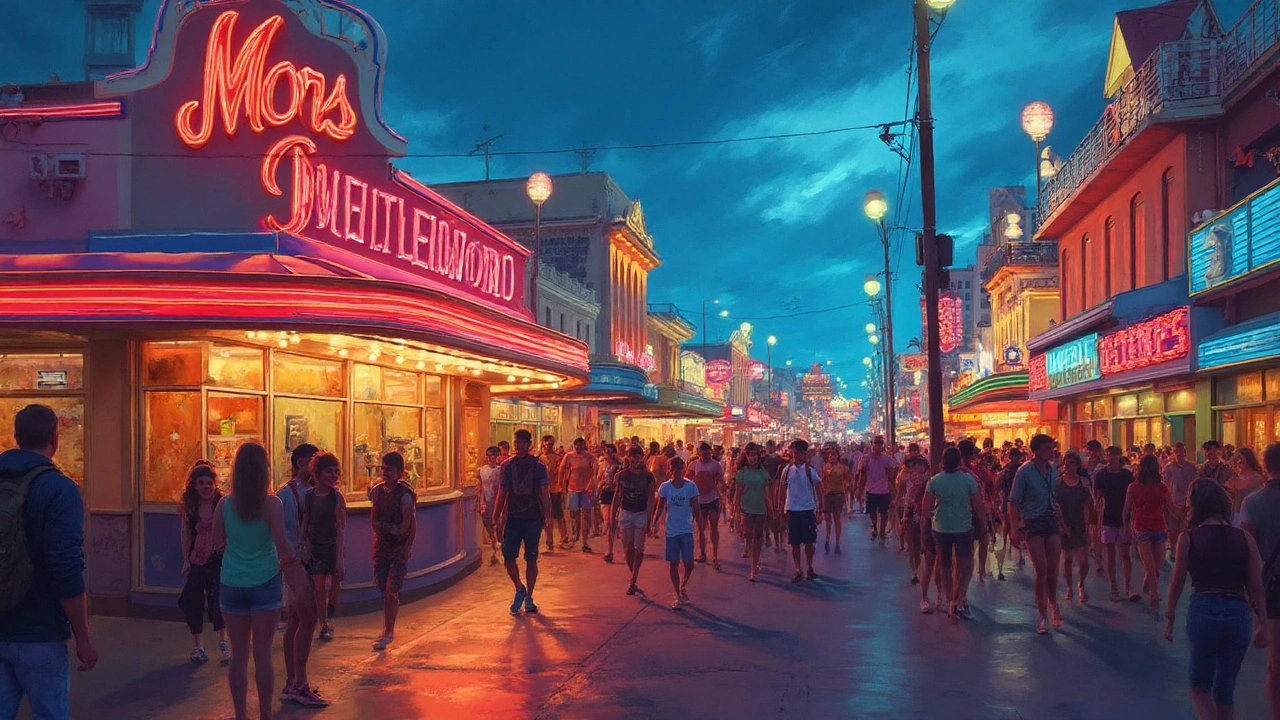Why Does Myrtle Beach Have a Bad Reputation? Truths, Myths, and What to Know in 2025
 Aug, 8 2025
Aug, 8 2025
If Myrtle Beach were a person, it’d be that friend who shows up at the party wearing neon, holding a six-pack, and never fails to get talked about. The city’s reputation rides a rollercoaster of wild stories, tourist grumbles, and flashy headlines. So, what really gives Myrtle Beach this infamously murky image? Is it just an easy punchline, or is there something deeper? That’s what we’re picking apart today—straight facts, some juicy tales, and whether you should put Myrtle on your travel list or skip it for good.
How Myrtle Beach’s Wild Reputation Took Hold
Myrtle Beach didn’t always get side-eye from vacationers. Decades ago, it was the go-to place for affordable family escapes—think mini-golf, pancake houses, and squeaky-clean boardwalks. But as the city tried to outdo itself, things changed. By the 1990s and early 2000s, wild spring breaks took over headlines. Crowds swelled, bars multiplied, and chaos sometimes followed. Throw in social media, and Myrtle’s less flattering moments went viral fast.
Much of Myrtle Beach’s rep comes from its party scene—bike rallies, spring break blowouts, and massive holiday weekends. If you believe the stories, it’s a non-stop circus. Honestly, some years, it’s felt like one. Police presence ramps up every Memorial Day. Businesses brace for pranksters, drunks, and the odd viral stunt. Newspapers feast on negative stories. But here’s the catch: those wild weeks make up a tiny slice of Myrtle’s year.
Locals, of course, see a different side. Families picnic at quieter beaches in winter. Retirees play golf and hit up dinner theaters. The city’s 34,000 or so residents live a year-round normal-ish life—except when the party storm blows in. So, if you only come for Bike Week or peak-frenzy Fourth of July, your experience will be colored by the carnival atmosphere. The rest of the year? A chill coastal town with more seagulls than rowdy crowds.
The Crime Question: Stats, Stories, and Daily Reality
The crime talk is hard to dodge when you ask, “Why does Myrtle Beach have a bad reputation?” It’s everywhere online—lists, travel tips, even rants on Facebook. So, what’s the real deal? Is Myrtle Beach actually dangerous, or is this just overblown tourist gossip?
First, let’s get nerdy with some real numbers. Myrtle Beach ranked high for crime rates on several travel websites and, yes, some FBI stats put the city near the top for property crime per capita as of 2023. But before you run, consider this: it’s a tourist hotspot that packs a city's worth of people—up to 20 million visitors per year—into five summer months. Imagine if your street had 1,000 strangers walking by your mailbox every day. Crime rate math uses the official resident population, not the wild surge of visitors. That makes even small crime numbers look massive when calculated per capita.
| Year | Violent Crime Rate (per 1,000 residents) | Property Crime Rate (per 1,000 residents) |
|---|---|---|
| 2022 | 8.4 | 74.5 |
| 2023 | 8.7 | 73.0 |
| 2024* | 9.1 | 75.2 |
*Unofficial early data for 2024
Most of this crime? It's things like petty theft—snatched beach bags, bike steals, the usual in any crowded tourist spot. Mugings, violent attacks, or robberies are rare, and the vast majority happen between people who know each other. Local police admit petty crime shoots up during summer, so you have to watch your stuff. Lock your car, keep your phone handy, and avoid wandering down unlit back streets after midnight—seriously, use common sense.
If you chat up locals at breakfast joints (try the Sea Captain’s House), they’ll tell you the same thing: use your head, and Myrtle’s not some seedy underworld. In fact, crime rates drop off a cliff in the winter and fall months when crowds thin out. This isn’t unique to Myrtle—think Las Vegas or Miami during peak tourist mobs.

Crowds, Chaos, and the Tourist Effect
Ask anyone who’s lived in Myrtle Beach awhile, and they’ll point to crowd overload as the root of the city’s wild reputation. Each year, the population explodes from a cozy 34,000 residents to millions. Getting stuck in this human traffic jam means long lines at every seafood buffet, rowdy groups on the boardwalk, and hotels scrambling to keep up.
What’s behind this crush of humanity? Cheap hotel deals, massive timeshare promos, road-trippable distance for much of the U.S. East Coast, and that iconic stretch of sandy beach—the “Grand Strand”—that just begs you to throw a towel down. Myrtle’s boardwalk bursts with arcades, bars, T-shirt shops, mini-golf, and stuff-your-face pancake houses. For families hunting for affordable sun, it’s a hit. For people hoping for a sophisticated getaway? Well, it’s not The Hamptons.
The result? Myrtle Beach crowds are a mix of party kids, retirees, families with strollers (and way too much sunscreen), and bikers rolling through for annual rallies. Some visitors treat the city like it’s lawless Vegas—leaving messes behind or pulling dumb stunts for TikTok. This chaos gets blasted across news, giving Myrtle a wilder image than it generally deserves.
- Beachfront hotels book up almost a year in advance for the busiest weeks—especially Bike Week (May) and the Fourth of July.
- Restaurants and attractions often hike prices during peak months, but fall and late spring deals can slash costs almost in half.
- Locals know the best time to visit is September or early May: warm weather, thin crowds, and better service almost everywhere.
- Myrtle Beach’s busiest stretch is only about 10 miles long—basically, everyone funnels into the same part of town.
- If you want real quiet, head north to Cherry Grove or south to Murrells Inlet—same ocean, but way less chaos.
For people put off by crowds, the solution isn’t complicated: skip the biggest party weeks, book out of season, and do a little homework before you go. The city’s rowdiness is a seasonal thing, not a permanent state of disaster.
Myth-Busting: What’s Still Great About Myrtle Beach?
This part surprises people. For all the trash talk, Myrtle Beach has loads going for it if you look past the drama. The beaches are gorgeous, wide, and public—no exclusive “resort only” zones blocking the sand. You get miles of classic Atlantic coastline perfect for swimming, shell-hunting, or just sitting around soaking up sun. And the water warms up sooner than most other beach towns on the East Coast, which is a win for anyone allergic to cold dips.
The city has over 90 golf courses, so if you’re a golfer, Myrtle is paradise. Love seafood? You’ll eat better (and for less) than basically anywhere north of Georgia. Those legendary pancake houses? They weren’t just a fad—breakfast is a big deal here because everyone’s up early to beat the heat or hit the links.
Keen to skip the party scene? Go in the offseason. November through February sees way fewer tourists, cheaper hotel rates, and a much slower pace of life. Want adventure? There’s fishing, dolphin-watching tours, state parks with empty trails, and more. Everyone hypes the Ocean Boulevard chaos, but wander just a little and you’ll hit cute neighborhoods, hidden diners, and photogenic piers.
- The Myrtle Beach reputation doesn’t match everyone’s experience—one survey found 86% of 2024 visitors would return, citing value and kid-friendly stuff as the main reasons.
- Family Kingdom is the oldest seaside amusement park in the region and runs old-school wooden roller coasters no Disney park would dare.
- The Carolina Country Music Fest every June attracts tens of thousands—yet crime rates drop due to tight event security.
- Places like Brookgreen Gardens, Huntington Beach State Park, and the Myrtle Beach Art Museum show off a chill, artsier side of the city rarely hyped in travel blogs.
- Statewide data shows hotel prices here are about 20% lower on average than other major beach destinations along the Atlantic coast.
Ready to pack your bags? My best neighbor back in Vancouver said it: "If you want quiet, don’t visit when everyone else does." Same goes for Myrtle. The bad rap often boils down to noisy weeks, wild crowds, and stats that don’t really tell the full story. Ask any local who hustles through the wild season and, come fall, happily reclaims their beach—there are two Myrtles. You just have to pick which one fits your style. Oh, and if you’re ever in line for pancakes at 8 a.m. on a July Saturday, don’t blame the city—you're officially part of the legend.
